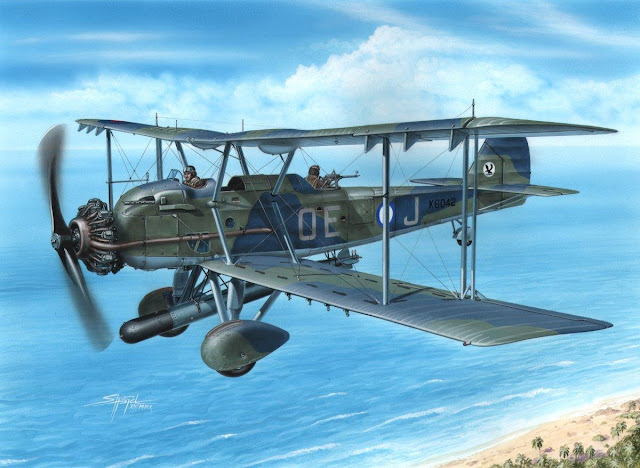Sarang Tebuan Jangan Dijolok. No. 100 Squadron RAF.
These days with the lockdowns, we do get to explore the net in details. The slogan popped-up on my browser yesterday and I thought I gave it a search. Rather interesting that the No. 100 squadron still carries the Malay slogan till today.
To the non locals, the slogan "Sarang Tebuan Jangan Dijolok" means "Don't stir up a hornet's nest".

A bit of history to the slogan. Here are some background to it.
No. 100 was established on 23 February 1917 at Hingham in Norfolk as the Royal Flying Corps' first squadron formed specifically as a night bombing unit and comprised elements of the Home Defence Wing. The unit was mobilised and crossed from Portsmouth on 21 March 1917 to France and was first based at St Andre-aux-Bois, where it received twelve Royal Aircraft Factory F.E.2Bs aircraft on complement.
After the war, the squadron's night bombing duties, was later converted to torpedo bombing with new aircrafts from Fawley Fawn. By November 1932, when the first Vickers Vildebeest came onto service with the RAF and with this aircraft the squadron was deployed as part of the operation to defend Singapore, arriving at Seletar in January 1934.
It was during the deployment to Malaya that the slogan was coined.

No. 100 was established on 23 February 1917 at Hingham in Norfolk as the Royal Flying Corps' first squadron formed specifically as a night bombing unit and comprised elements of the Home Defence Wing. The unit was mobilised and crossed from Portsmouth on 21 March 1917 to France and was first based at St Andre-aux-Bois, where it received twelve Royal Aircraft Factory F.E.2Bs aircraft on complement.
After the war, the squadron's night bombing duties, was later converted to torpedo bombing with new aircrafts from Fawley Fawn. By November 1932, when the first Vickers Vildebeest came onto service with the RAF and with this aircraft the squadron was deployed as part of the operation to defend Singapore, arriving at Seletar in January 1934.
It was during the deployment to Malaya that the slogan was coined.

During the Japanese invasion of Malaya, the squadron was put at readiness but, for the period to December 1941, but due to little involvement operationally whilst still based at Seletar. In November and December 1941 detachments were sent to Fisherman's Bend, in Victoria, Australia. Intended replacement aircraft (Bristol Beauforts) for the remaining squadron were not forthcoming and, as part of operations against advancing Japanese forces, the unit's obsolete Vildebeest aircraft were used in strikes against enemy shipping.
The squadron was severely tested in the Battle of Endau. Switching the night duties to day light bombing, the obsolete aircrafts were shot down. Because of this, the squadron lost most of its aircraft in engagements with Japanese fighters. Despite several attempts to remain operational as a combined unit along with No. 36 Squadron RAF, as Japan made advances in Malaya and Singapore, most personnel eventually as prisoners in Changi.

The squadron was severely tested in the Battle of Endau. Switching the night duties to day light bombing, the obsolete aircrafts were shot down. Because of this, the squadron lost most of its aircraft in engagements with Japanese fighters. Despite several attempts to remain operational as a combined unit along with No. 36 Squadron RAF, as Japan made advances in Malaya and Singapore, most personnel eventually as prisoners in Changi.

On 15 December 1942, No. 100 Squadron RAF proper was re-formed in the UK, at RAF Grimsby, near Waltham, as a night-time heavy bomber squadron and was part of No. 1 Group RAF, RAF Bomber Command. In January 1943, the squadron received the first of its new complement of Avro Lancasters; the first operation of the squadron was on 4 March 1943 against a U-boat base at St Nazaire. A few days later the squadron was involved in a raid against Nuremberg in Germany and from then on, as part of Bomber Command's strategic role against Germany, took part in every major raid.
At the end of 1943, the squadron had completed the second largest number of successful operations of units within No. 1 Group Bomber Command and had the lowest 'loss' rate. On the night of 16/17 December 1943, the squadron received orders to attack Berlin. The raid became known as 'Black Thursday' as Bomber Command lost 25 aircraft on the raid and 28 in crashes at fog-shrouded airfields. That night, 100 Squadron lost their commanding officer, David Holford, who crashed landed approaching RAF Grimsby. On the night of 5 June 1944, the squadron bombed heavy gun batteries in support of the D-Day invasion.
No100 Squadron do have great wartime heritage even though they did not fair too well against the more advanced Japanese fighter planes. Being part of the St Nazaire raid in itself surely have given the squadron the much wanted recognition.

At the end of 1943, the squadron had completed the second largest number of successful operations of units within No. 1 Group Bomber Command and had the lowest 'loss' rate. On the night of 16/17 December 1943, the squadron received orders to attack Berlin. The raid became known as 'Black Thursday' as Bomber Command lost 25 aircraft on the raid and 28 in crashes at fog-shrouded airfields. That night, 100 Squadron lost their commanding officer, David Holford, who crashed landed approaching RAF Grimsby. On the night of 5 June 1944, the squadron bombed heavy gun batteries in support of the D-Day invasion.
No100 Squadron do have great wartime heritage even though they did not fair too well against the more advanced Japanese fighter planes. Being part of the St Nazaire raid in itself surely have given the squadron the much wanted recognition.




Comments
Post a Comment